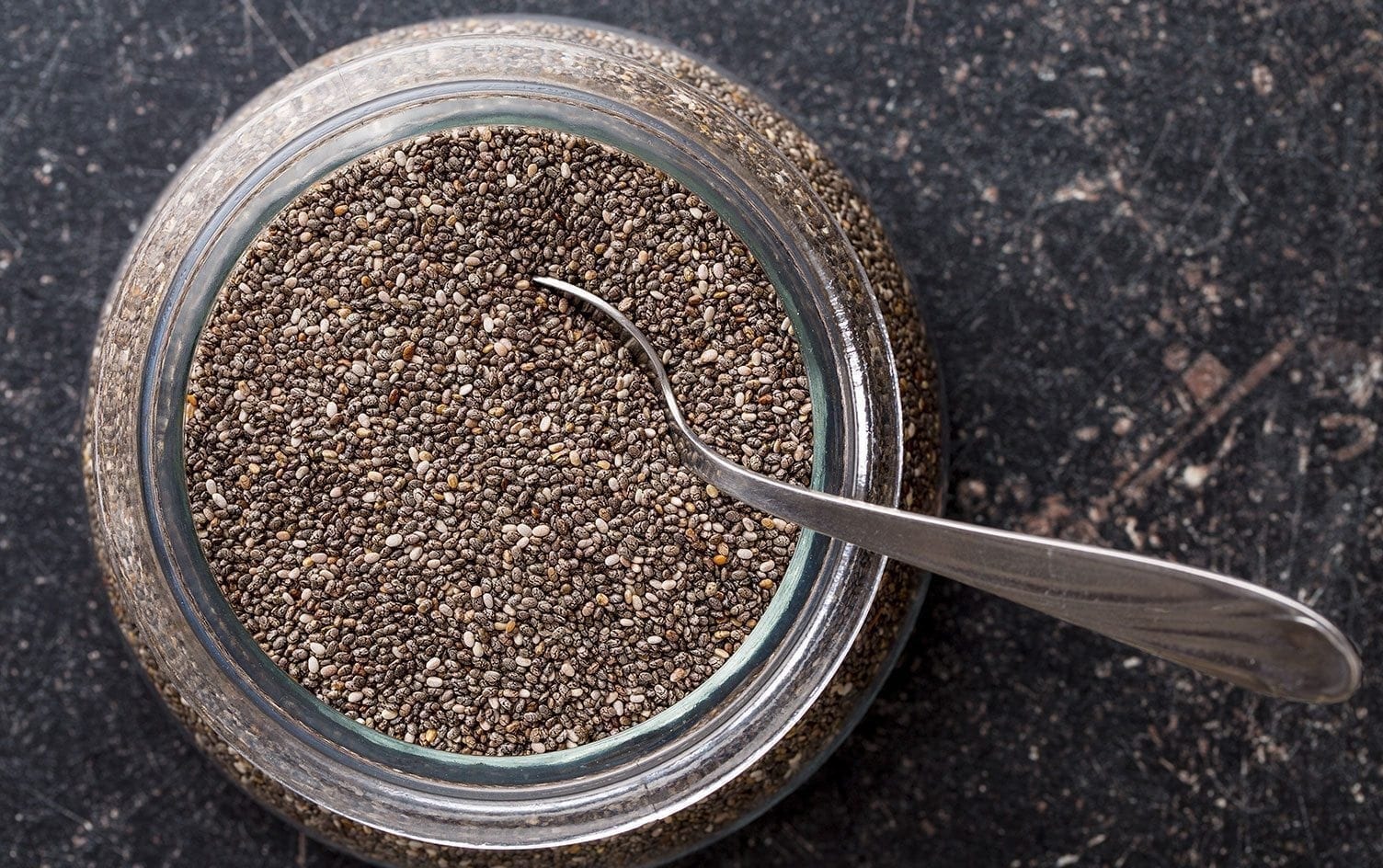My first taste of a chia drink evoked a deep suspicion I’d just swallowed a mouthful of frog eggs. It was far from the glorious sense of well-being I’d been led to expect. A quick check confirmed the translucent, jelly-like globules I’d just consumed were hydrated chia seeds and not amphibians in the making. My first thought: These gelatinous blobs would need to be packed with a whole lot of nutritional goodness if I’d ever drink that stuff again.
As it turns out, chia seeds are pretty good for you. Similar in size to sesame seeds, they’re packed with protein. One tablespoon contains 3 grams of protein, along with 5 grams of total fiber (that’s as much as 5 cups of corn flakes, hello) but just 60 calories, which means they’re an excellent way to help you feel full without adding many calories to your diet. In addition, chia contains a host of minerals, such as calcium, iron, potassium and magnesium.
Another benefit: You can dial it down on the kale salads if you eat chia. The seeds are rich in ALA, alpha-linolenic acid, the most common type of omega-3 fatty acid found in foods such as fatty fish and leafy greens. This “good fat”— something our modern diet often lacks — is helpful in reducing inflammation in the body, lowering risks associated with heart disease and promoting better cognitive functioning. Sure, there are other sources of omega-3s out there, but chia’s ease of use sets it apart: You don’t need to extract anything (Think: fish oil) or grind it to release its nutritional benefits (See: flax seed).
READ MORE > 7 WAYS TO EAT CHIA SEEDS THAT AREN’T ALL CHIA PUDDING
In short, the seeds are so nutritious, they deserve their reputation as a superfood. But please note: This is old news. Back in the day — about 3,000 B.C. — the ancient Maya and Aztec cultures revered chia seeds and relied on their nutritious, filling qualities. A member of the mint family (its botanical name is Salvia hispanica), the plant wasn’t widely embraced until the aughts, when the arrival of chia-based brands like MammaChia helped it hit the mainstream. These days, chia beverages are found everywhere from Whole Foods to Target, and chia seeds can be purchased at most grocery stores.
Fortunately, you can get all the benefits of chia through eating the seeds in their non-hydrated form. So if the drinks aren’t your thing, no problem. Sprinkle over oatmeal or into yogurt for a bit of crunch. The seeds have a relatively neutral flavor that doesn’t change the taste of most foods. However, if you enjoy that unique gel-like quality they attain when added to liquid, it’s super easy to hydrate the seeds and blend them into smoothies or even dips or salad dressings.
READ MORE > STRAWBERRY & SPINACH SALAD WITH CHIA DRESSING
For decades, this mighty little seed was best known for being the inspiration for puffy green Chia Pets. Now we all know they have more to offer than posing as hair or fur on ceramic figurines, but here’s one thing I learned the hard way: Take it easy when you first get started with chia. Don’t add more than a tablespoon of seeds a day to your diet right out of the gate or you might have to deal with the “b word” (yes, that’s right, bloat).
For me at least, it took a bit of time to handle the amount of fibrous, superfood-y goodness that even small amounts of chia delivered. Now that I’m adjusted, I reach for chia at mealtimes — and someday soon, I might even try to drink it again, and see if the frog-egg factor was real or just a figment of my imagination.
Share with us: What’s your favorite way to enjoy chia seeds?






